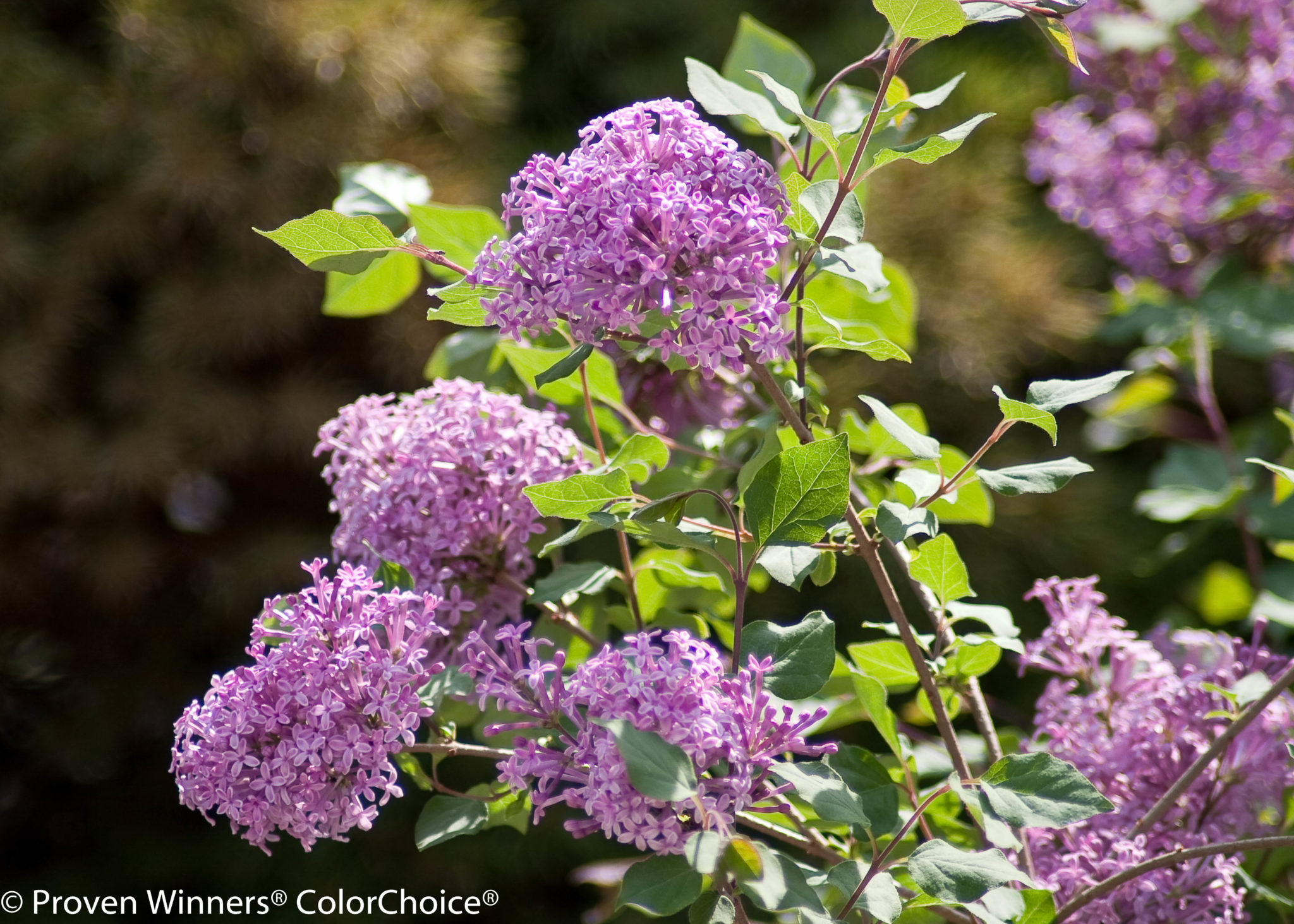Lilac Bloomerang® Dark Purple (Syringa)
$69.99 – $250.00
Description
Don’t settle for lilacs that bloom just once a year – get Bloomerang® lilac and enjoy months of blooms instead of just weeks.
Bloomerang Purple lilac is the original reblooming lilac. It blooms in spring along with other lilacs, takes a brief rest to put on new growth, then blooms again from mid-summer through fall. A bit smaller than other lilacs, Bloomerang also has a nice, rounded shape that looks great anywhere you plant it in the landscape. Star-like flowers are a beautiful shade of classic lilac purple and are sweetly scented.
Bloomerang lilacs are also noted for their exceptional disease resistance – no worries about ugly white or brown foliage to spoil the floral show. And like other lilacs, it is sun-loving and deer resistant, so it makes an easy care choice for years of beauty.
Top reasons to grow Bloomerang lilac:
– It’s reblooming! It doesn’t only bloom once in spring – it also blooms summer through fall.
– Disease resistant. Doesn’t get ugly from fungus and bacteria like older lilacs can.
– Neat, rounded shape looks good in the landscape or garden.
Uses Notes
A classic addition to foundation plantings and mixed borders. Bloomerang lilac is also a popular choice for planting in decorative containers – learn more here.
Maintenance
Plant only in full sun and well-drained soil; lilacs cannot tolerate soggy, wet conditions.
The rebloom of Bloomerang lilac occurs on the new growth the plant creates after its spring bloom. For the best rebloom, it’s vital that the plant grows vigorously during late spring and early summer. Do this by keeping it well-watered and mulched and in plenty of sun (six hours a day at least). If you wish to fertilize it, you may do so in early spring, once the ground has thawed, and again in late spring, after it blooms.
If you want to prune Bloomerang lilac, do so immediately after its spring bloom. Never cut it back in fall, winter, or early spring – doing so will remove the spring flower buds. It is not necessary to prune Bloomerang lilac in order for it to rebloom. However, giving it a light trim after blooming does remove the developing seed heads (they look like green bananas, and some people don’t care for the way they look on the plant), providing a neater look, and encourages more new growth for reblooming. Trimming after blooming will delay the rebloom by a few weeks compared to an untrimmed Bloomerang lilac.
Like nearly all lilacs, Bloomerang lilac actually requires a period of cold weather in order to bloom well. This is why lilacs are not typically suited to warmer climates. However, they are very, very cold tolerant and thrive in climates as cold as USDA zone 3.
Popular Uses
Border Plant, Container, Cut Flower, Landscape, Mass Planting
Size: various
Store SKU: 76
Additional information
| Size | #15 Tree Form (76), #2S, #3, #5TF, #7TF |
|---|---|
| Brand | |
| Tracking ID | PW9339 |
| SMP SKU | 9339 |
| Attracts | |
| Bloom Son | |
| Bloom Time | Early Fall, Early Summer, Late Spring, Late Summer, Mid Fall, Mid Spring, Mid Summer |
| Flower Shade | |
| Foliage Shade | |
| Grass | |
| Habit | |
| Hardy Temp | |
| Height | |
| Height Category | |
| Light Requirement | |
| Maintenance Category | |
| Market Height | |
| Max Temp | |
| Needs Drainage | |
| Resists | |
| Scientific Name | |
| Seasons | |
| Shrub Type | |
| Spacing | |
| Spread | |
| USDA Hardiness Zone | |
| Vine | |
| Water Category |

